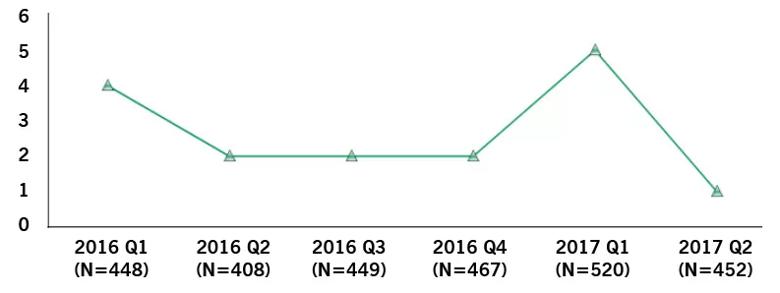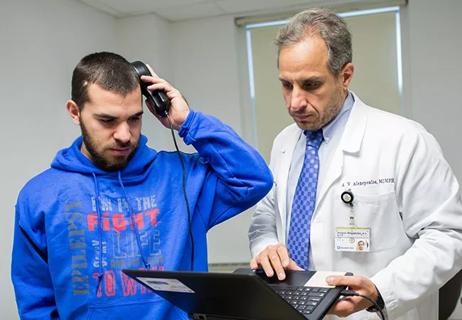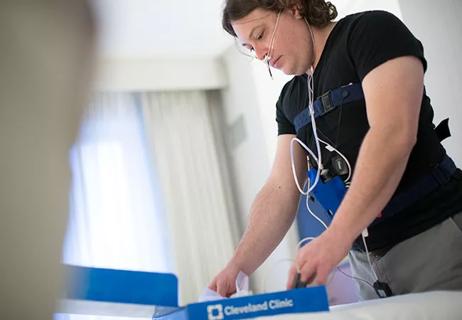Collaboration, institutionalizing best practices are central

By Ajit Krishnaney, MD, and Tagreed Khalaf, MD
Advertisement
Cleveland Clinic is a non-profit academic medical center. Advertising on our site helps support our mission. We do not endorse non-Cleveland Clinic products or services. Policy
If your institution were offered a chance to halve its readmission rates following spinal, orthopaedic and neurological surgery over five years, would you take it? How about an opportunity to send the incidence of venous thromboembolism (VTE) on a broadly downward trend for six quarters and counting?
These achievements were accomplished by Cleveland Clinic’s Center for Spine Health after a series of quality initiatives undertaken by our center in recent years. While we all know that quality achievements can be elusive and subject to circumstances beyond our control, there’s still a lot that provider teams can do to shift metrics in the right direction. This article outlines a few of the initiatives behind the achievements above, with advice on elements that can be adopted by virtually any healthcare institution.
In 2012, the Affordable Care Act started requiring the Centers for Medicare & Medicaid Services to reduce payments to hospitals with excessive readmissions, providing a strong incentive for medical institutions to examine and improve their practices.
With this in mind, staff in our Center for Spine Health instituted monthly quality meetings of key representatives from all levels of the healthcare team, including surgeons, medical spine specialists, advanced practitioners, nurses and a center administrator. At each meeting, we examine metrics (e.g., readmission rates, length of stay, intraoperative and postoperative narcotic use, intraoperative transfusions, incidence of VTE and surgical spine infections), identify trends and discuss challenges. We also review every case of VTE, spine surgical infection and readmission within 30 days of surgery to determine whether our standardized protocols were followed.
Advertisement
The meetings are also a venue for identifying unaddressed issues, refining protocols and developing new initiatives.
Unlike most large institutions, which hold separate departmental morbidity and mortality (M&M) conferences, our Center for Spine Health combines spine surgery, neurosurgery and orthopaedic conferences and includes physicians from Cleveland Clinic’s regional hospitals. These physician-only meetings are an opportunity to frankly discuss complications and possible errors and learn from one another. The “cross-pollination” between specialties is invaluable for bringing different perspectives to the table. With residents and fellows in attendance, the M&M conferences also serve as an unparalleled teaching tool.
Examining evidence from the literature is a key part of each conference, with the aim of identifying and developing best practices for standardization throughout the institution. Some members of the joint M&M conferences also participate in the monthly quality meetings, ensuring that both groups stay informed and responsive to institutional needs.
Enhanced recovery after surgery (ERAS) protocols have become an important new model leading to improved clinical outcomes and cost savings in general and colorectal surgery. Staff from Cleveland Clinic’s Anesthesiology Institute approached Center for Spine Health staff to collaborate in adapting such protocols for spine surgery. As a result, ERAS protocols are now being developed and implemented for pre-, peri- and postoperative phases of spine surgery.
Advertisement
One surprising finding identified as we laid the groundwork for our preoperative ERAS protocols was that 21 percent of patients undergoing spine surgery at Cleveland Clinic required blood transfusions. A little digging into risk factors revealed that 15 percent of all spine surgery patients are anemic prior to undergoing surgery. Our new ERAS protocol ensures that patients now undergo a thorough preoperative examination at least six weeks prior to surgery so that preexisting anemia can be treated before surgery.
Other high-risk surgical groups identified are patients with diabetes, patients with a body mass index greater than 35 and the elderly. Spine surgery patients with any of these risk factors are now sent for “prehabilitation” so that existing conditions can be optimized before surgery. Collaboration throughout the institution is critical: For example, patients with uncontrolled diabetes (HbA1c > 8 percent) are fast-tracked for an appointment with an endocrinologist.
Surgeons and anesthesiologists have developed and are now launching surgical protocols for blood management and use of narcotics. Postoperative protocols, currently in development, are focusing on standardizing mobilization and pain control.
Other successful protocols in our center have targeted surgical site infections and can be read about in detail in a previous post. Protocols for spine surgery patients (specific to low- and high-risk groups) aimed at reducing VTEs have also been developed (see chart below), with encouraging outcomes (see graph below).
Advertisement

Prior to such protocols, every surgeon had his or her own routines. Standardization allows for streamlined processes for the entire healthcare team, more meaningful outcomes metrics and a solid basis for refining institution-wide best practices.

Figure. Quarterly rates of postoperative pulmonary embolism or deep vein thrombosis cases among spine surgery patients since implementation of the VTE protocol.
In our experience, critical components of quality initiatives include:
Dr. Krishnaney is a spine surgeon and Dr. Khalaf is a medical spine specialist, both in Cleveland Clinic’s Center for Spine Health, where they oversee quality initiatives.
Advertisement
Advertisement

Favorable rates may stem from focus on outcomes monitoring

Nearly two-thirds of patients see clinically meaningful gains in large series

Treatment outcomes validate clinic's group-therapy approach

Insights from the first studies of HCAHPS data in this setting

Outcomes outtakes ranging from home sleep testing to QoL effects

Diversifying the mix with intensive outpatient care, shared appointments

Most patients report relief from intractable spasms

Intensive program has multiple lasting benefits